Introduction of Columns
Important Point
The whole structure of a building is comprised of different types of components. The column is one of the most important parts of the Framed Structure.
Columns are designed to carry the axial loads in compression.
The Columns are used all over the world for the decorative as well as structural purpose.
The main function of the columns is to transmit the load of the superstructure to the underground strata.
In this article, you will get to know what are columns, different shapes of columns, column types, types of RCC columns, the difference between column vs pillar, and column pillar.
What Are Columns?

The column is a rigid vertical structural member.
The effective depth of the column exceeds 3 times the lateral dimension.
Generally, column carries the axial loads in the compression.
Biaxial column is subjected to the axial compressive force are undergoes to Moments on one or both axes.
Factors on which strength of the column depends
- The shape of the column
- Size of the column
- Length of the column
- Cross-section of the column
Types of Columns in Architecture
There are five major order of architectural columns used in the construction are as follows
- Doric
- Ionic
- Corinthian
- Tuscan
- Composite
Useful Article for You
- What Are Tiles
- What Are Spread Footings
- What Are Contour Intervals
- What Are Parapets
- What Are Walls Made Of
- What Are Cinder Blocks Used For
- What Are Grade Beams
- What Are Cranes
- What Are Piers
- What Are Concept Sketches
- What Are Micropiles
- What Are Cmu Walls
- What Are Residential Buildings
- What Are Flights of Stairs
- What Are Well Points
- What Are Weep Holes
- What Are Oblique Drawings
- What Are Doors
- What Are Flagstones
- What Are Caissons
- What Are the 6 Types of Technology?
- What Are the 4 Forms of Precipitation
Different Types of Rcc Columns
Columns are classified into different types according to the different criteria are as follows
- Classification of the column based on its cross-section
- Classification of the column based on its loading
- Classification of columns based on its length and behaviour
- Classification of columns on the basis of its longitudinal reinforcement
The brief description of the classification of columns given as follows
1. Classification of the Column on the Basis of Its Cross-Section
There are different types of pillars and shapes of columns which are used in the construction as per the requirement or design.
1.1. Square Column or Rectangular Column
Square columns or square column design and rectangular columns are commonly used in the construction of buildings.
The construction of the rectangular or square columns is easier and less costly to cast.
1.2. Circular Column
Circular columns are specially design and widely used in the filing and elevation of the structures.
Circular columns give the good aesthetical appearance to the structure.
Circular columns are commonly used in the construction of bridge pillars.
1.3. T-Column
T-column is used as per the design requirements of the structure.
1.4. L-Column
The L-columns is not commonly used in the structure.
It is used at the corner of the frame structure.
Also, Read: Bolt Vs Screw | What Is Bolt | What Is Screws
2. Classification of the Column on the Basis of Its Loading
2.1. Axially Loaded Column
Axially loaded columns are subjected to the loading which is acting along the longitudinal axis or centroid of the column section.
2.2. Axially Loaded and Uniaxial Bending Column
The axially loaded and uniaxial bending column subject to the loads which do not act on the longitudinal axis of the column section.
2.3. Axially Loaded and Biaxial Bending Column
Biaxial bending of columns occurs when the loading causes binding on the principal Axis simultaneously.
Also, Read: What Is Bridge Abutment | 5 Types of Abutments
3. Classification of the Column on the Basis of Its Length and Behaviour
3.1. Short Column
The short column is defined as the column whose ratio of the least lateral dimension of the column is less than 12, then it is known as a short column.
3.2. Long Column
Long column is defined as the column whose ratio of the least lateral dimension of the column is more than 12,then it is known as Long column.
4. Classification of Column on the Basis of Its Longitudinal Reinforcemen
4.1. Tied Column
A tied column is a column in which the longitudinal reinforcement bars are tied together with the separate small diameter transverse ties which are spaced at some interval along the column height.
4.2. Spiral Column
Spiral columns are the columns in which the longitudinal bars are arranged in the circular shape. There is a total of 6 number of bars are used for the longitudinal reinforcement.
4.3. Composite Column
A composite column is a column which is made of structural Steel shape or pipe which are surrounded by or filled by the concrete with or without longitudinal reinforcement.
Round Column Vs Square Column
The round pillar design and square column, or square pillar design, are commonly used column shapes in the construction. The difference between the Round column and square are as follows
Round Column |
Square Column |
| Round columns are symmetric about centroidal Axis. | Square columns have four-axis of symmetry. |
| The minimum number of bars which are required in the round columns are 6. | The minimum number of bars which are required in the square columns are 4. |
| A special type of formwork is required for the construction of Round column. | Simple formwork is required for the Construction of square column. |
| The Construction of the round column is expensive as compared to the square column. | The Construction of square column is economical as compared to the round column. |
| There are no weak points in the round column due to its circular shape. | The square column has four weak points due to the corner edges. |
| Round columns are strong in compression so they can carry more load. | Square columns can carry less load as compared to round columns. |
Also, Read: Building Estimation Step by Step In Excel Sheet
Useful Article for You
- Classification of Stone Work
- Cement Rate Today
- How to Get House for Free
- Top 10 Cement in India 2023
- Slab Reinforcement Calculation
- Steps for Construction of Building
- What Is Hempcrete
- How Long Does Thinset Take to Dry
- Floating Concrete Slab
- Zero Force Members
- How Much Does a Yard of Concrete Weigh
- Gradient Road
- Types of Vaulted Ceilings
- Pile-Cap
- Bond Breaker
- Budget Sunroom Ideas
- What Is Gypsum Board
- What Are Risers
- What Are Engineering Drawings
- Average Door Height
- Maximum Roof Overhang Without Support
Pillars Vs Columns
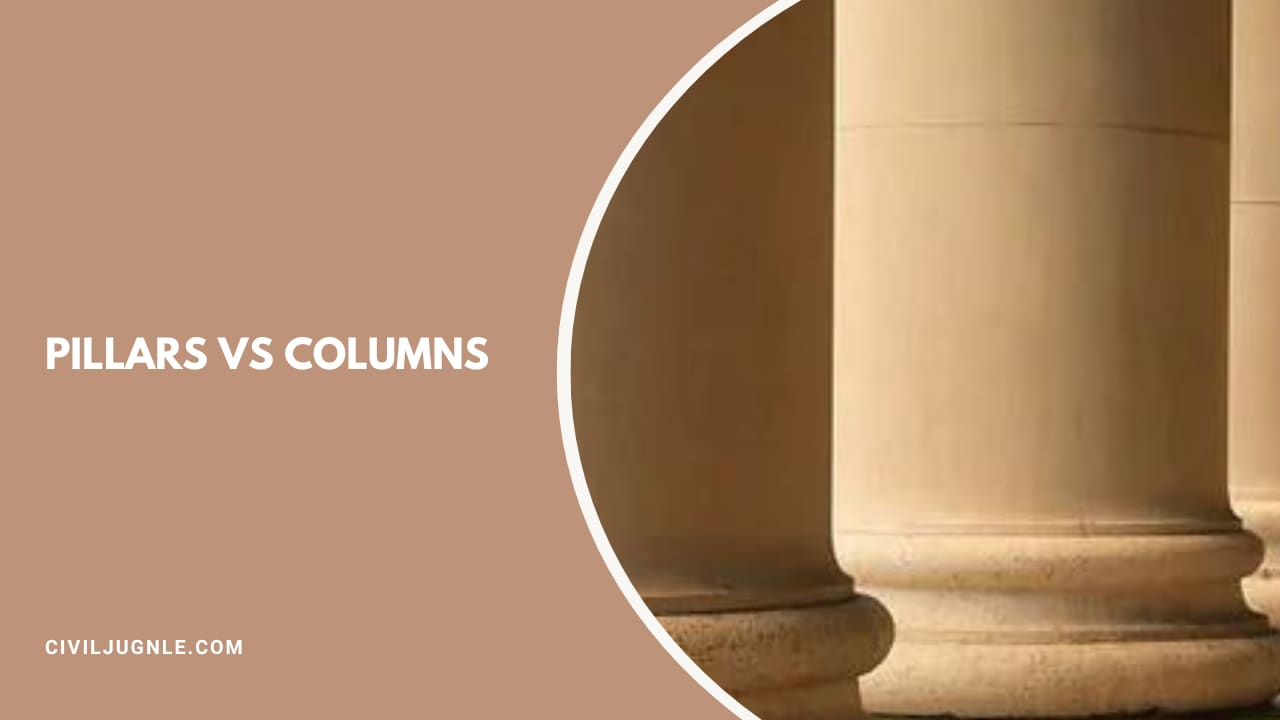
Pillar is also widely used as a decorative element in the Buildings.
The column is a structural element which transmits the total load of the structure to the footing and the soil.
Difference Between Pillars and Columns
Column |
Pillar |
| Column, or rcc pillar design, is a structural member which transmits the total load of the superstructure to the underground Strata. | Pillar is the Structural vertical element which is designed to bear the weight of building roof. |
| Columns are used to support the load-bearing walls | Pillars are used for the decorative purposes. |
| In the construction of columns, steel is used. | Steel is not used in the construction of pillars. |
| All columns are not the pillars | All pillars are the columns |
| Columns are use to support the load of the component members such as beam and slab. | Pillar can be stand alone or support the roof of the Buildings. |
Types of Column
- Square or Rectangular Column.
- Circular Column.
- L and T shaped Column.
- Tied Column.
- Spiral Column.
- Composite Column.
- Axially Loaded Column.
- Uniaxial Eccentrically Loaded Column.
Non Structural Columns
Non- structural columns are made of polymers. Some are hollow and may receive weight-bearing wood or metal posts. They come in many classic shapes and are typically sold in increments of 4 feet. They may be coupled with any of a variety of decorative caps and bases.
Types of Greek Columns
The three major classical orders are Doric, Ionic, and Corinthian. The orders describe the form and decoration of Greek and later Roman columns, and continue to be widely used in architecture today.
Types of Roman Columns
The Romans adopted the Doric, Ionic, and Corinthian orders and modified them to produce the Tuscan order, which is a simplified form of the Doric, and the Composite order, which is a combination of the Ionic and Corinthian orders.
Types of Columns in Architecture
There are five orders of columns in classical architecture: Tuscan, Doric, Ionic, Corinthian, and Composite.
Pillar Vs Column
A pillar is a vertical support member and may be constructed as a single piece of timber, concrete or steel, or built up out of bricks, blocks and so on. However, whereas a pillar does not necessarily have a load-bearing function, a column is a vertical structural member that is intended to transfer a compressive load.
How Many Types of Reinforced Concrete Columns Are There?
Concrete columns can be roughly divided into three categories– Pedestals, Short reinforced columns, and Long reinforced columns. Besides in modern days columns can be classified in different categories on a different basis.
What is Civil Column?
Columns are defined as vertical load-bearing members supporting axial compressive loads chiefly. This structural member is used to transmit the load of the structure to the foundation. In reinforced concrete buildings beams, floors, and columns are cast monolithically.
Like this post? Share it with your friends!
Suggested Read –
- Brick Vs Stone
- Mat Foundation Vs Spread Footing
- What Is Construction Contract | Types of Engineering Contracts | Percentage-Rate Contract
- Concrete Mix Ratio | What Is Concrete Mix Ratio | Types of Concrete Mix Ratio
- What Is Plumbing | Systems of Plumbing | Difference Between One pipe, Two Pipe, Single Stack, and Single Stack Partially Ventilated | How to Choose of Plumbing System.
- What Is Pitched Roof | 8 Types of Pitched Roof | Advantages of Pitched Roof
- What Is the AASHTO Classification System | AASHTO Classification System Procedures
- What Is Rock Cycle | Types of Rocks | Processes in Rock Cycle | What Are the Steps of Rock Cycle | Uses of Rocks in Construction

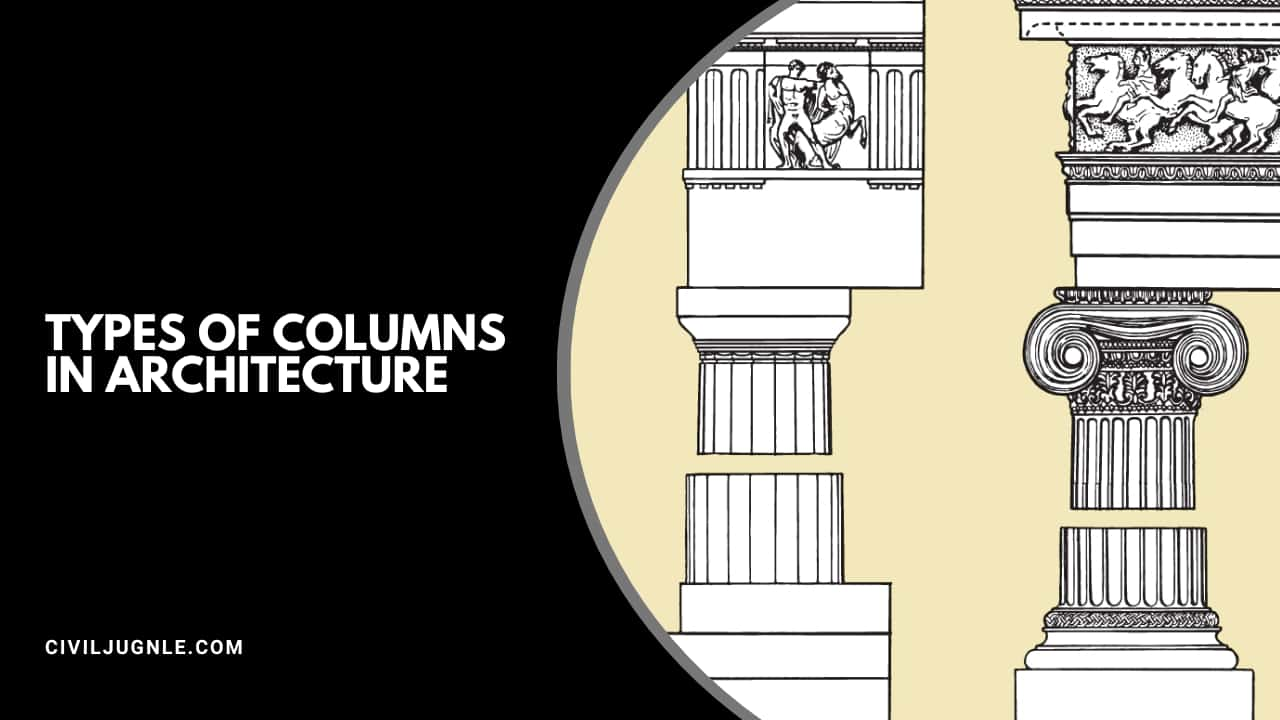




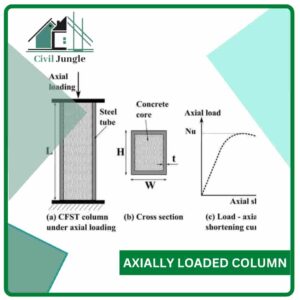
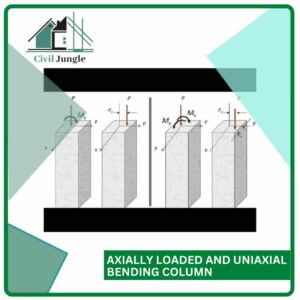
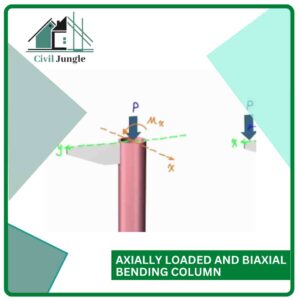
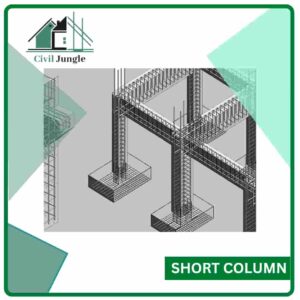
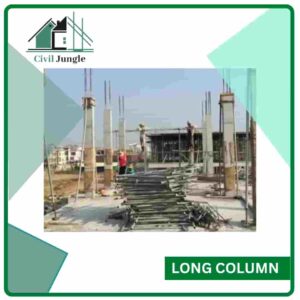
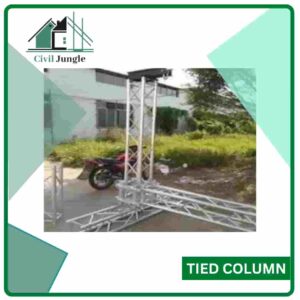

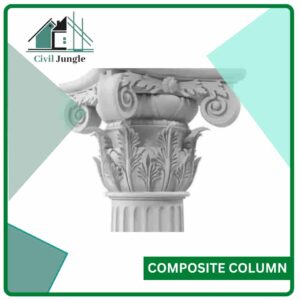

Leave a Reply